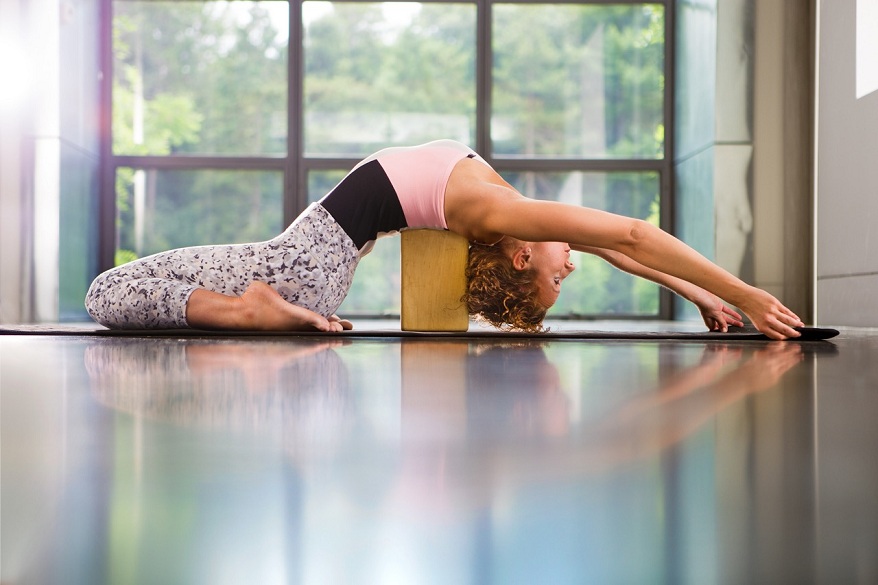A yoga block or also known as brick is one of the most popular yoga props nowadays. Yoga blocks are extremely useful in the practice for both the beginner and professionals. Beginners can really benefit from yoga blocks as they can use them when they are still not flexible as they should be. Today, the choice of yoga blocks is huge, so you can choose and buy yoga block according your needs and preferences. Regardless a beginner or not, the most important thing to remember when using a block is to not rest or sink your hand on the yoga block. Instead, keep your fingers spread, and use the hand like a suction.
Yoga blocks are usually used as extension of one’s hands, but they are also used to support the hips, back and head. Generally speaking, yoga blocks are more helpful for beginners and those experiencing injury or other physical problems, but they can be also used by experienced practitioners to safely learn new challenging poses.
Things To Consider When Buying Yoga Block
When purchasing a yoga block you will need to consider the following things: material, size, number and cost.
The ideal size for a yoga block is 23 x11.5 x 7.6 cm, but on the market you will find yoga blocks that are larger and smaller than this. The size of the yoga blocks usually depend on the size of the user's hands and the level of his/her flexibility. For instance, if you have small hands and are fairly flexible you might want to consider a smaller sized yoga block. Consequently, if you have larger hands and are less flexible, you might want to consider a larger yoga block.
Originally yoga blocks were made out of wood, but nowadays, yoga blocks also come in foam and cork form.
Things To Consider When Buying Yoga Block
When purchasing a yoga block you will need to consider the following things: material, size, number and cost.
The ideal size for a yoga block is 23 x11.5 x 7.6 cm, but on the market you will find yoga blocks that are larger and smaller than this. The size of the yoga blocks usually depend on the size of the user's hands and the level of his/her flexibility. For instance, if you have small hands and are fairly flexible you might want to consider a smaller sized yoga block. Consequently, if you have larger hands and are less flexible, you might want to consider a larger yoga block.
Originally yoga blocks were made out of wood, but nowadays, yoga blocks also come in foam and cork form.
- Wooden yoga blocks are usually made of pine, bamboo, maple, birch, balsa and poplar. It is true that wooden blocks are hard and heavy, but they are very sturdy, visually pleasing and you can be sure that they will last forever. Their main downsides is that they are more expensive, they can slide around on a hardwood floor and they can become slippery with wet hands.
- Cork yoga blocks are more eco-friendly than the former ones. They are way softer and lightweight, they stack and store well, but their main downside is that they absorb odors and sweat.
- Foam yoga blocks are the least expensive, softer and lightweight ones. They are extremely easy to clean, durable and cost-effective, which makes them the most preferred ones in yoga studios. Their main downsides is that the foam can get dirty, so they are not as eco-friendly as wood and cork ones.
- Regardless the type of yoga block you have, you can use it in forward folds, so you can find better alignment. This position is especially suitable for beginners, when flexibility isn't there yet. All you need to do is sit on the edge of the block and stretch your upper body and hands toward your feet. Keep this tilt as you exhale and come forward.
- The pigeon pose can be extremely helpful especially when your hips or knees flexibility is low or if the knee and hip rotation isn't available. Place the edge of the yoga block right under the sit bone. On that way the yoga block will encourage a forward tilt of the pelvis, bringing the body into proper alignment. All you need to do is to root the fingertips into the ground under your shoulders, and spin the inner thigh of the back leg up.
- The bridge pose is perfect for encouraging the inner thighs to draw toward one another. This brings the knees in alignment, and encourages a lift in the pelvis.

